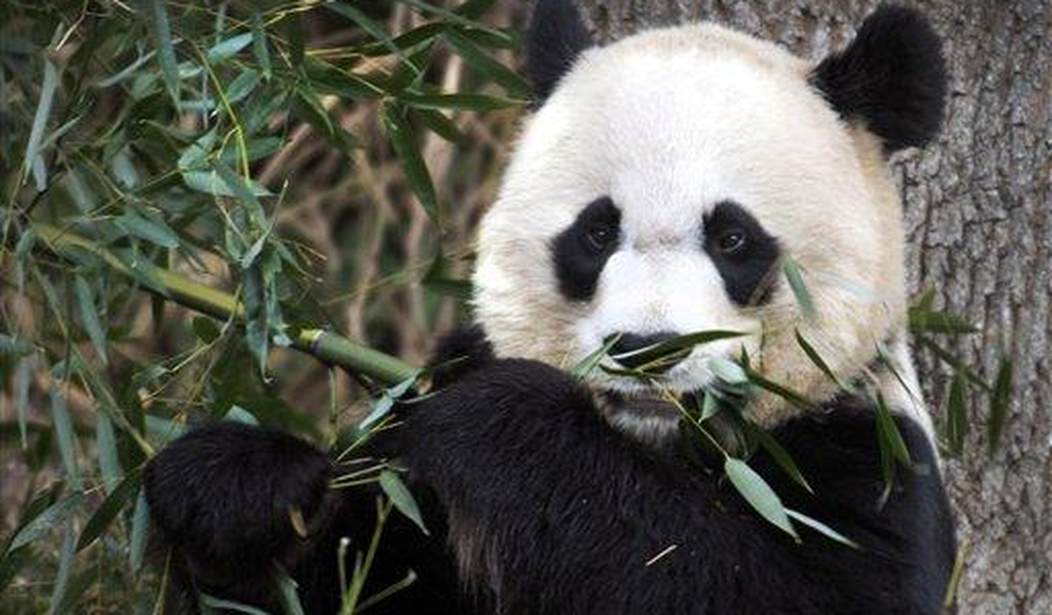There are fewer than 2,000 Giant Pandas left in the wild in carefully carved-out preserves guarded closely by the Chinese. There are another 600 in zoos and breeding centers around the world.
In 1972, during his visit to Communist China, Richard Nixon’s wife Pat happened to mention to Chinese Premier Zhou Enlai her fondness for pandas. Mrs. Nixon had recalled seeing a Giant Panda at suburban Chicago’s Brookfield Zoo when she was little — one of only three of the animals to be displayed in the United States.
Brookfield’s last panda died in 1953. And since the beasts are notoriously difficult to breed in captivity, the Giant Pandas had been lost to American enthusiasts until China donated two Giant Pandas to America in Mrs. Nixon’s name. Ling-Ling and Hsing-Hsing were gifted to the National Zoo in Washington, D.C., and they immediately became celebrities. “Pandamania” had been let loose in our nation’s capitol. Millions of people from around the country and around the world crowded around that Giant Panda enclosure to watch the two bored but endlessly entertaining animals eat, sleep, and loll around — pretty much what pandas do in the wild.
Ling-Ling had five cubs but they only lived a few weeks. It seems that she was not the most attentive mother. Ling-Ling died in 1993. Hsing-Hsing lasted until 1999, finally being euthanized at age 28.
A year and 8 days later, Mei Xiang and Tian Tian were delivered as part of a deal with the panda breeding center in China. The pair had a baby, Xiao Qi Ji, who is now three years old. Alas, all three are to be returned to China sometime in November or December.
An agreement with China in 2000 “stipulated [Mei Xiang and Tian Tian] would live at the Zoo for 10 years in exchange for $10 million,” according to the zoo’s website.
A decade later, the Smithsonian and the China Wildlife Conservation Association signed a new Giant Panda Cooperative Research and Breeding Agreement in January 2011. That agreement stated the pandas would stay at the zoo until December of 2015.
The contract was extended to 2020, then again to 2023, shortly before each previous contract expired.
I remember seeing the pair several times in the years I lived in DC. It seems the public never tired of them as the Giant Pandas were always the number one attraction and the zoo and sales of their memorabilia far outstripped any other animal.
But now, the Chinese want them back. Not for any geopolitical reasons, but because the Chinese research facility that loaned them out wants to bring them home to breed them. They are, after all, trying to save a species.
The Giant Pandas have become a symbol not only of the National Zoo, but of Washington, D.C., itself.
More than four generations of zoo-goers from Washington and around the country have had the chance to experience the city’s giant pandas, and 10 presidents have held office since they came to town. Former first lady Michelle Obama helped name one of the giant panda cubs. Nixon once discussed giant panda mating problems with a newspaper editor. President Bill Clinton noted that “they have long claws and very big teeth.”
“We prepare for this, you know,” Zoo Director Brandie Smith told NBC4. “The success for these animals is to grow up, to return to China, to be part of the bigger breeding program and make more pandas.”
“Our goal is to save a species,” she added. “The fact that we can have giant pandas here and everybody gets to help us and enjoy it, that’s just an extra bonus.”
Related: Chinese Zoo Denies Its Bear Is Actually a Human in a Costume
Talks are already underway with the Chinese breeding facility to take two more young pandas on loan. The National Zoo’s own panda research facility is one of the best in the world, and they shouldn’t have too much trouble getting the bears.
And when the next pair of Giant Pandas arrive, we can expect another huge outpouring of excitement. But why? What is so fascinating about Giant Pandas?
They’re incredibly rare, says Laura Doty, communications specialist with the Memphis Zoo. “They’re cute, they’re cuddly, but they’re also different and I think that’s why everyone feels so drawn to them.”
But it might be the two-tone coloring that brings out something in humans.
“It seems to invite our nurturing instinct,” said Henry Nicholls, author of “The Way of the Panda.” Nichols points out that the bear’s face, “large eyes and clumsy nature make it appear almost like a baby,” according to an interview with the CBC. “For some reason it’s very easily anthropomorphized,” he said.
Whatever the reason, people love them. And I hope we get some more of them soon.










Join the conversation as a VIP Member